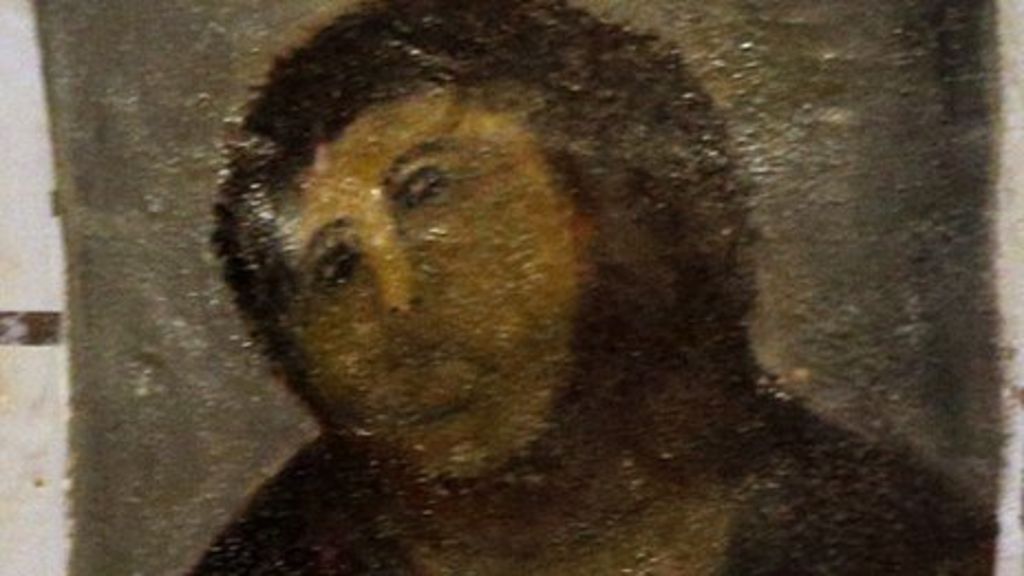There has been a movement for a long time, going back even to ancient civilizations finding things from ancient-to-them civilizations, to preserve art. But this is a faulty premise in its essence. Art is, in modern terms, a snapshot. A picture. It is a piece of its culture captured for only a moment. Without context, art is nothing or, even worse, something it was never intended to be. And as such, truly preserving it is impossible, and the act of such destroys the piece in a far more egregious manner than time ever could.
As an image for this post, I chose the Ecco Homo held in a sanctuary in Borja, Spain which was made famous for its faulty restoration. But while this is a literal destruction of a piece of art during an attempt at restoration, it isn't at the heart of that of which I speak. Because this is what happens to the soul of a piece of art when you take it out of its cultural context. And in a more literal sense, this is what happens to art whenever we try to preserve it. There are few if any pieces of art from dead cultures on display that have not been restored to some extent. Ones open to the environment, like the roof of the Sistine Chapel, are regularly touched up to preserve what some new artist thinks they should look like. Every act of preservation is a reinterpretation, an adulteration using someone else's skill to try and mimic the original. Which is, of course, impossible to truly do. And it creates a layer of falsehood that covers the original work and tarnishes its purity.
Rather, art is a symbol of its time, a culture that will inevitably fade. In accordance with this, the art itself too should fade and decay the same way that its context did, the culture it captured did, and the artist who made it did. Be that film or statuary, painting or architecture, the preservation of art is the violation of that same art. Returning to it outside of the context of its creation only causes us to misunderstand the piece, to project our modern sensibilities on it. Every time we observe a piece of art from a dead culture, we are doing with our minds what those who sandblasted the statues of ancient Rome and Greece did. We are forcing our sensibilities on them with no ability to truly understand what they once meant to the people for whom they were made.
Attempting to preserve art is only hastening its obliteration and creating obscene forgeries that claim to have the same value as their progenitor. Any piece which has been preserved, especially through restoration, gives those observing it now a false idea of what the piece truly was, in both the spiritual and material sense. But more egregiously, as art is an expression of an idea born of a person or people within a certain culture existing in a certain place at a certain time, as those elements are lost, the truth of the art is also lost, causing any attempt to preserve the piece just an extension of misinterpretation and misunderstanding of the artwork which can be twisted in uncountable ways. Therefore, art should not be preserved but rather allowed to die its noble death naturally as time and tide dictate.

This boils down to:
Sure, it's impossible to preserve a piece of art in such a way that those who experience it later also experience all of the context around that art. However, if the preservation process begins soon after the art is created, it is possible to document the relevant context and - to some extent - the artist's intended meaning. Those who experience it later can learn if they want. There's a chance art can go wrong (The creator of Pepe the Frog hates it's use by the alt-right.) but all actions carry risk. We have to decide when the risk outweighs the benefits. I'm not sure how to strike that balance but I would presume it's not always or never. It's a sometimes kind of thing, which is why it requires care and attention by the original preservers.
I saw your comment that you are not arguing in good faith here, this is just a debate you picked. That's fine.